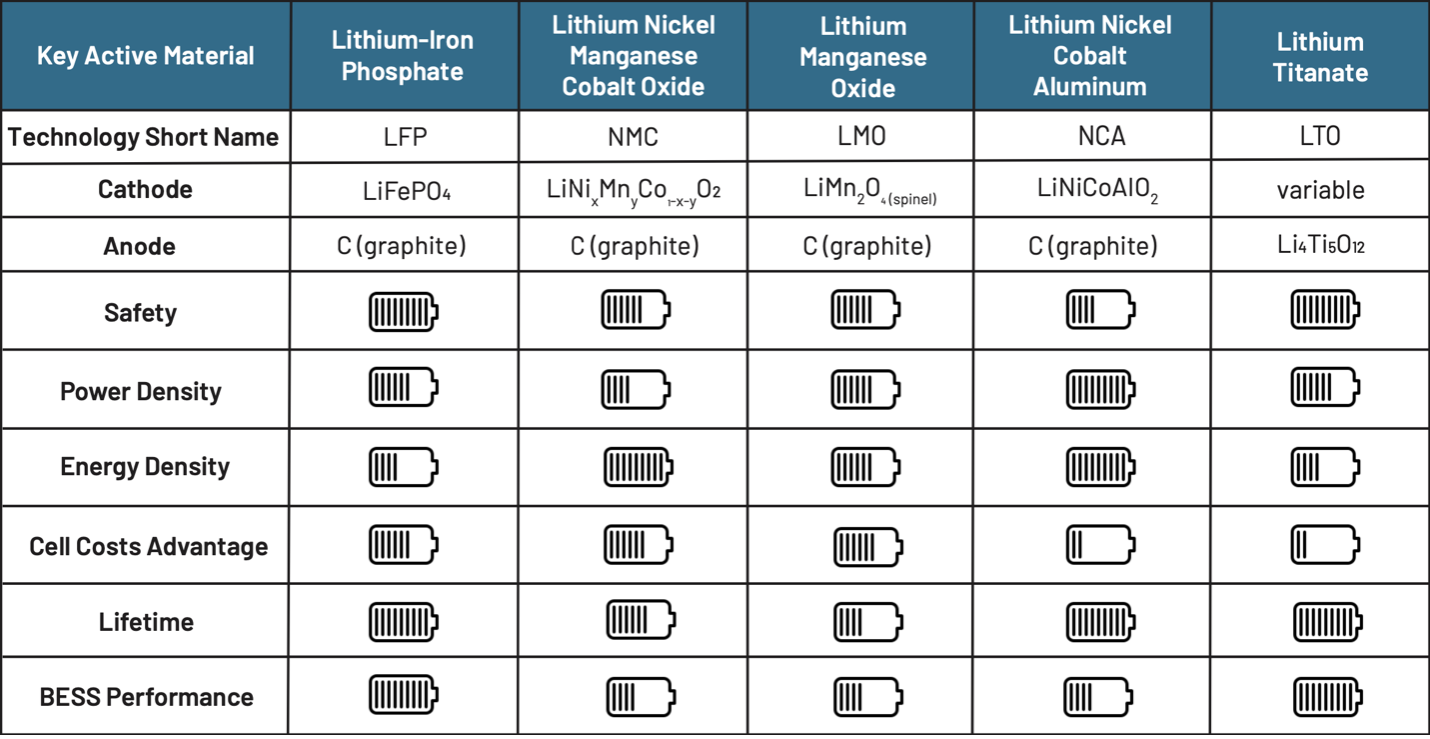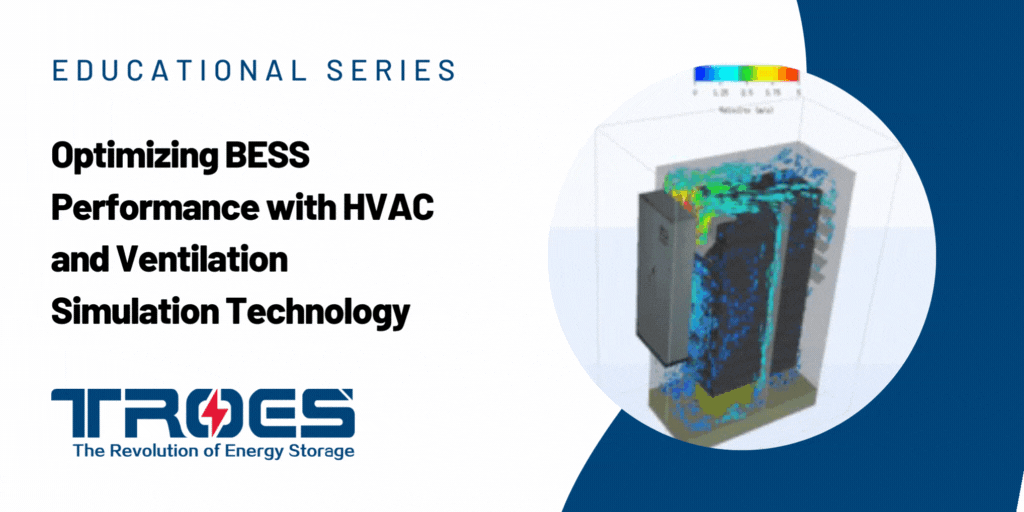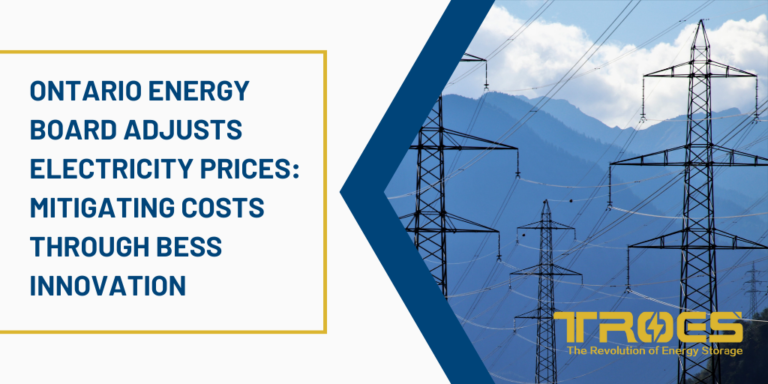Top 5 Lithium Batteries For Commercial Energy Storage
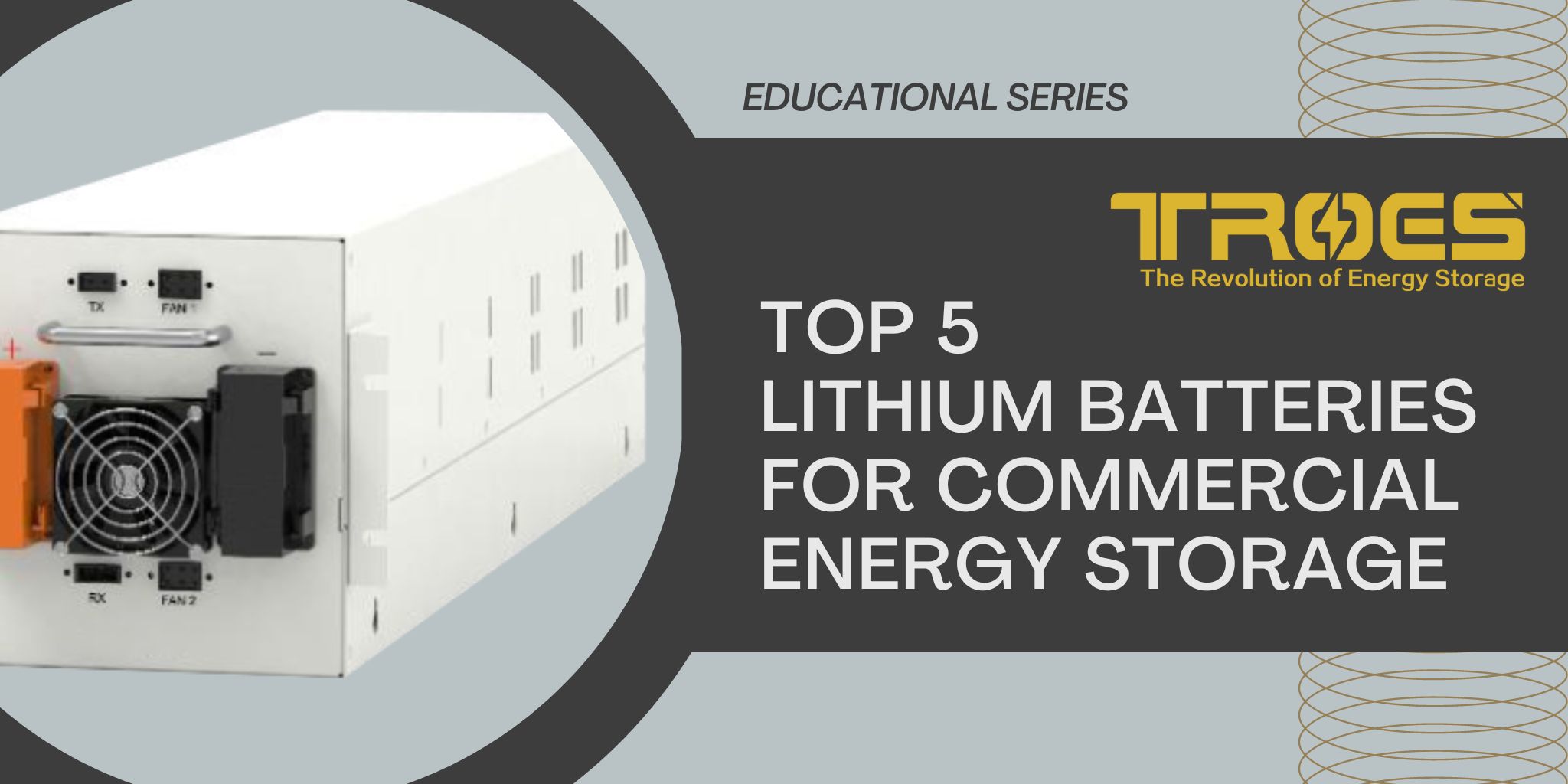
Lithium batteries are used in most aspects of our daily lives. We subconsciously interact with these batteries everyday through smartphones and laptops. With international efforts to adopt net zero emissions by 2050,and clean energy on the rise the significance of lithium batteries expands into large-scale uses such as commercial, industrial, and institutional energy storage systems.
The Top 5 Lithium Batteries
Choosing the right type of battery is crucial for any energy storage project. It is imperative to choose the right one for your energy storage project. The top five lithium-ion batteries compared today are:
- Lithium Iron Phosphate,
- Lithium Nickel Manganese Cobalt Oxide,
- Lithium Manganese Oxide,
- Lithium Nickel Cobalt Aluminium, and
- Lithium Titanate
Each type presents a distinct set of chemical components, molecular structures, and cathode materials, making them suitable for various applications in battery energy storage technology.
1. Lithium Iron Phosphate (LiFePO4)
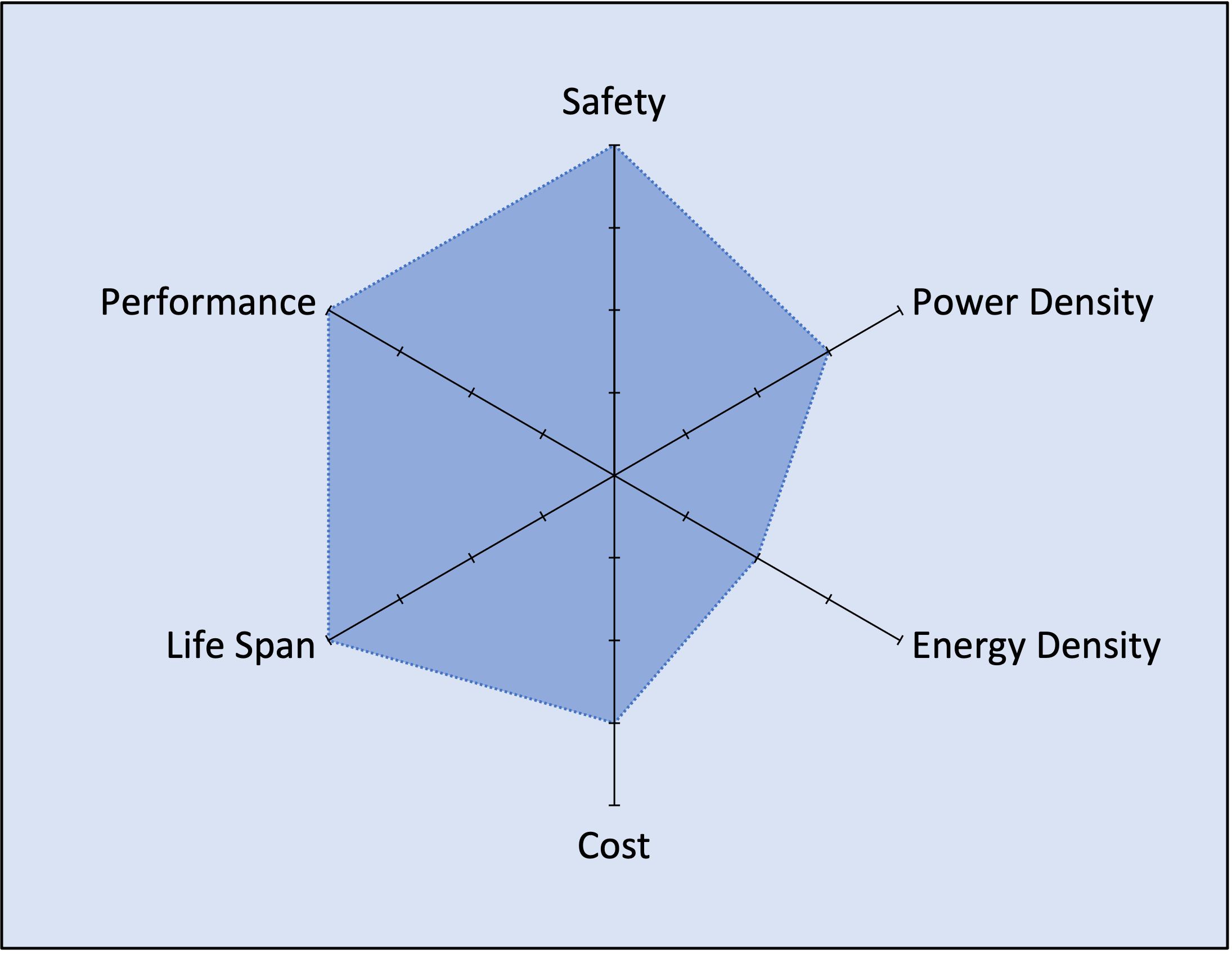
SAFETY:
POWER DENSITY:
ENERGY DENSITY:
COST:
LIFECYCLE:
PERFORMANCE:
4/4
3/4
2/4
3/4
4/4
4/4
PROS:
CONS:
+Highest Safety Rating
+Long Lifecycle
+Strong Power Capability
-Lower Energy Density
LFP batteries are renowned for their safety and long lifecycle, making them a leading choice for battery energy storage systems, electric vehicles, and more. They offer a robust power density and are cost-effective, despite having a lower energy density. This balance of features makes LFP an excellent replacement for lead acid batteries, especially in applications requiring high safety and long-term reliability, like backup power and frequency regulation.
Out of all lithium batteries, LFP is arguably the number one choice for commercial energy storage systems, electric vehicles, and other applications thanks to the advantage of having a long lifespan and one of the highest safety records of all lithium batteries.
Lithium iron phosphate technology has been around for decades but still continues to grow in the battery market, proving LFP chemistry is as reliable as it is mature. Due to its remarkable achievement in safety and lifespan, LFP is recommended for projects replacing old Lead Acid batteries, diesel optimization/augmentation, backup power, and frequency regulation.
2. Lithium Nickel Manganese Cobalt Oxide (LiNiMnCoO2)
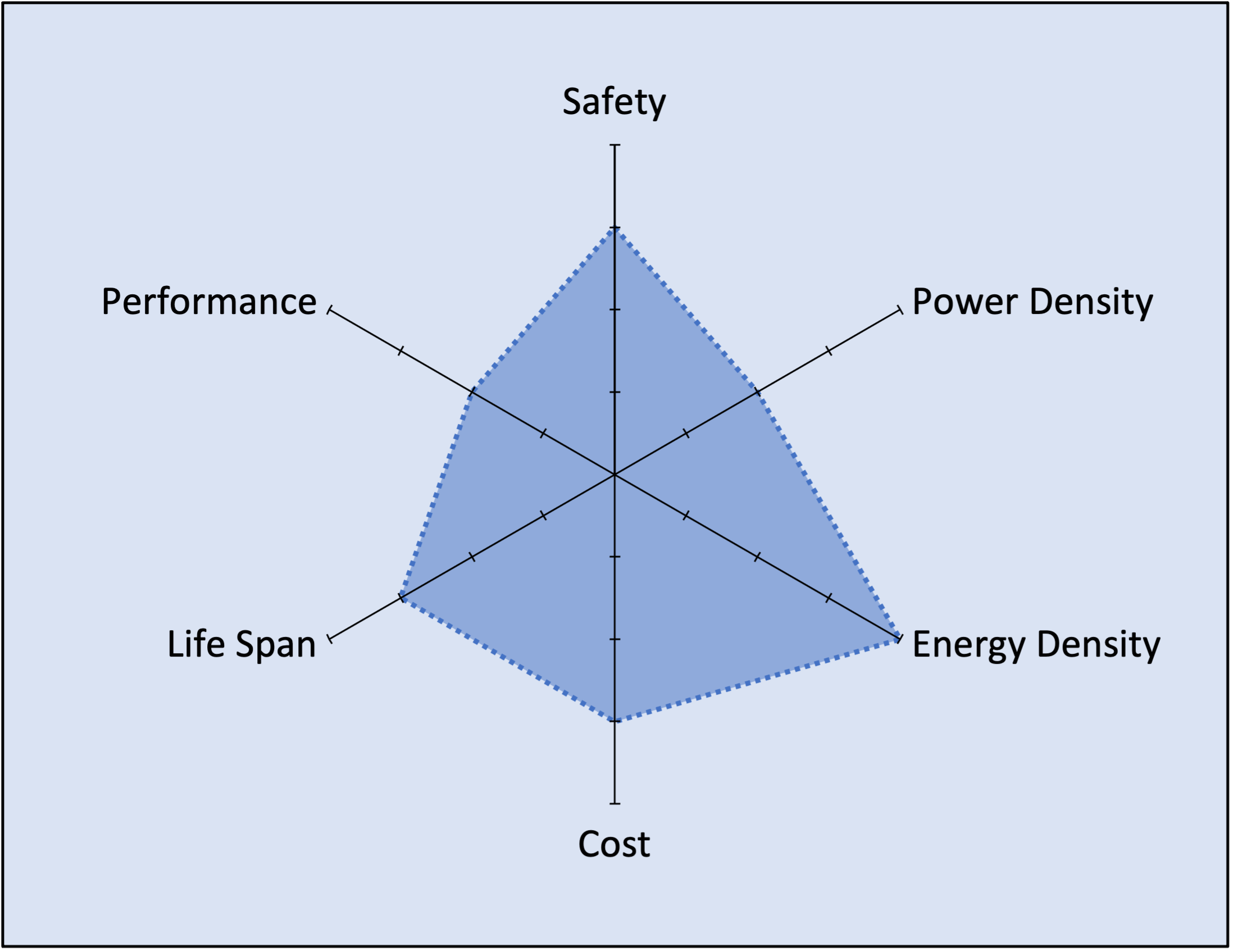
SAFETY:
POWER DENSITY:
ENERGY DENSITY:
COST:
LIFECYCLE:
PERFORMANCE:
3/4
2/4
4/4
3/4
3/4
2/4
PROS:
CONS:
+Highest Safety Rating
+Low Cost
-Lower Energy Density
-Lower Performance
Lithium Nickel Manganese Cobalt Oxide (NMC) stands out for its high energy density and affordability. These characteristics make them desirable for electric powertrains and vehicles, though safety concerns have prompted some battery companies to explore alternatives. The flexibility in tuning the nickel and manganese content allows for optimization towards specific energy or power needs, highlighting the adaptability of NMC in various battery storage and electric mobility applications.
NMC has a high energy density allowing it to store more energy compared to a similar sized battery. While this benefit makes NMC desirable for electric powertrains, electric vehicles, and electric bikes, it has caused concerns for car owners who might worry about their vehicles catching on fire after a collision.
NMC has low to moderate characteristics in terms of power, safety, life span, and performance compared to other lithium batteries. It can be optimized to either have a high specific power or high specific energy by changing the NI & Mn percentage in the chemical component. Nickel and Cobalt are finite resources that require lots of mining and produce emissions in the process. Companies like Tesla are shifting to LFP from NMC in their EVs due to supply concerns as well as how superior the chemistry is.
3. Lithium Manganese Oxide (LiNm2O4)

SAFETY:
POWER DENSITY:
ENERGY DENSITY:
COST:
LIFECYCLE:
PERFORMANCE:
3/4
3/4
3/4
3/4
2/4
2/4
PROS:
CONS:
+Enhanced Safety
+Low Cost
-Limited Performance
-Lower Life Span
Lithium Manganese Oxide (LMO) is a well-balanced battery that follows the tagline “Jack of all trades, master of none.” LMO features moderate power density and energy density compared to the other types of lithium batteries. Its two main advantages are the low cost to produce the batteries as well as its high thermal stability and enhanced safety.
The drawbacks of LMO include a below-average battery performance and life span requiring the battery to be augmented or replaced more often than other battery types. LMO batteries were first published and used in 1996 proving the technology is mature and advancing. LMO is used in medical devices and power tools primarily due to its safety and affordability.
4. Lithium Nickel Cobalt Aluminium (LiNiCoAIO2)
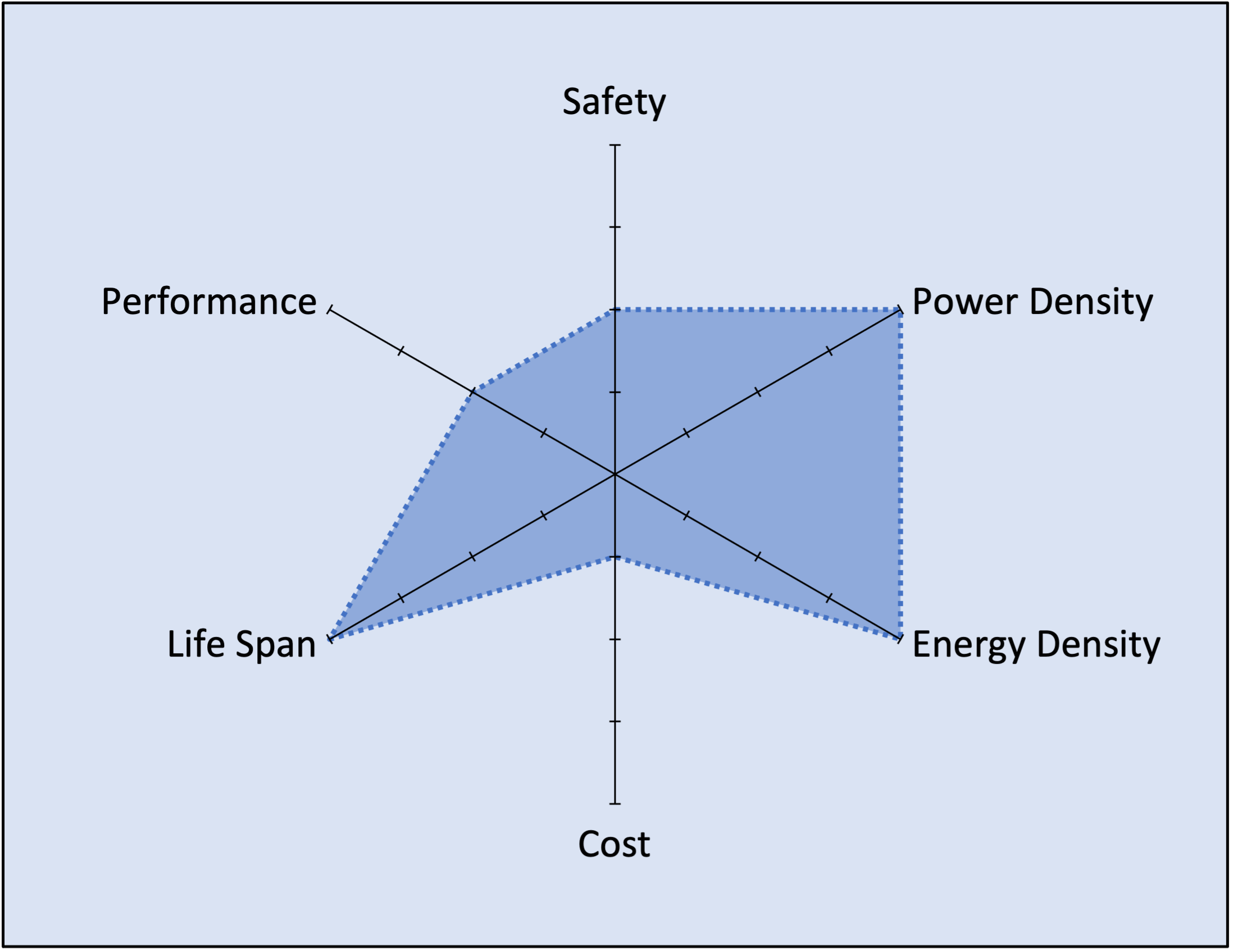
SAFETY:
POWER DENSITY:
ENERGY DENSITY:
COST:
LIFECYCLE:
PERFORMANCE:
2/4
4/4
4/4
1/4
4/4
2/4
PROS:
CONS:
+High Power
+High Energy Density
+Long Lifecycle
-Expensive
-Weak Performance
-Low Safety Rating
Lithium Nickel Cobalt Aluminum (NCA) is composed of equal parts of nickel, cobalt, and manganese. NCA cells have one of the highest power and energy capabilities as well as an incredibly long life cycle making them a common choice for stationary applications and the electromobility sector. NCA is incredibly powerful, the biggest advantage and its biggest downfall.
The high percentage of cobalt in its chemistry makes it one of the more expensive lithium-ion battery types. Cobalt is a difficult resource to supply and has negative effects on the environment. Due to unpredictable safety and performance, consumers find it difficult to incorporate it as the battery of choice for energy storage systems.
5. Lithium Titanate (Li2TiO3)
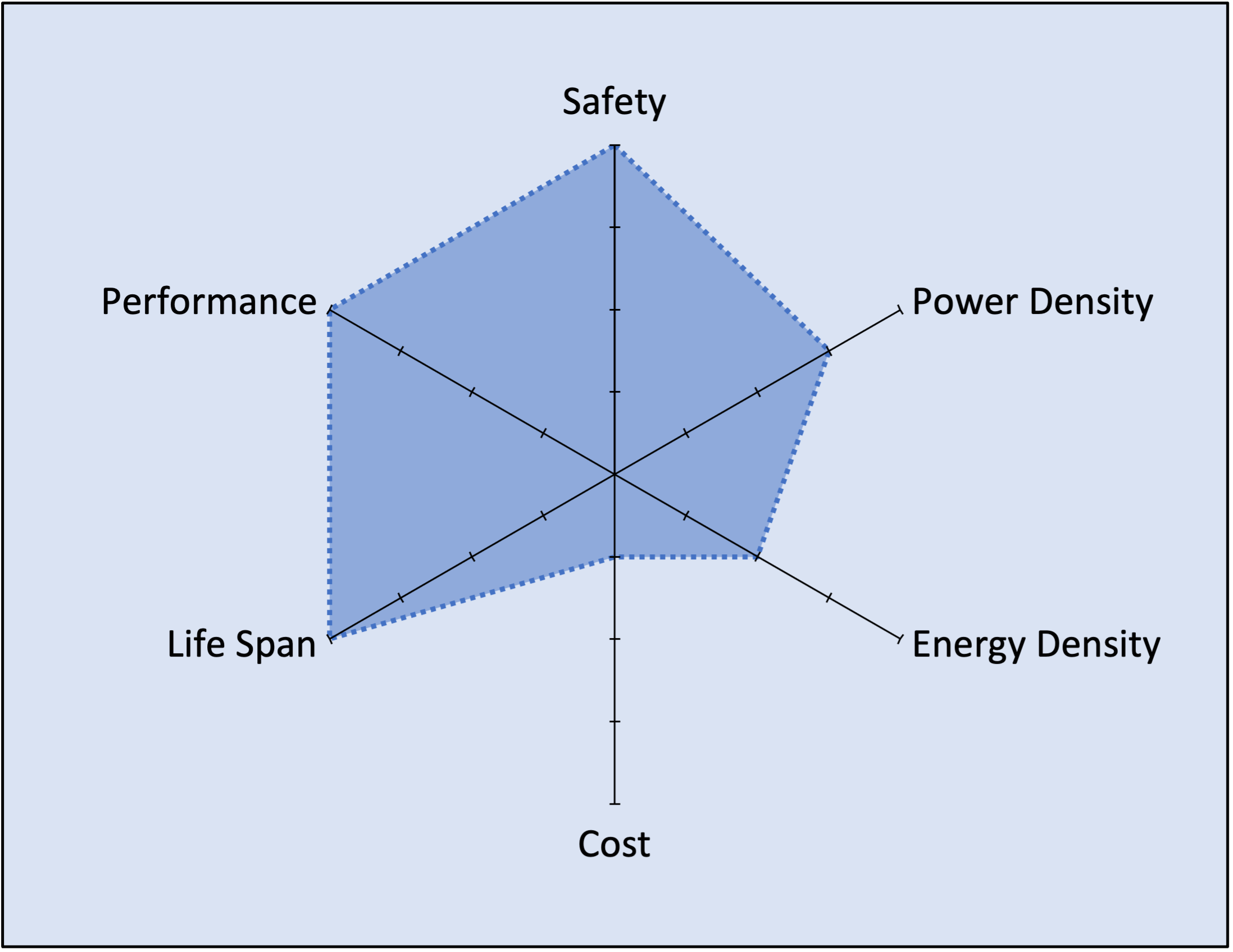
SAFETY:
POWER DENSITY:
ENERGY DENSITY:
COST:
LIFECYCLE:
PERFORMANCE:
4/4
3/4
2/4
1/4
4/4
4/4
PROS:
CONS:
+High Power Density
+Good Thermal Stability
+Long Lifecycle
-Expensive
-Low Energy Density
Lithium Titanate (LTO) exhibits strong benefits in terms of performance, power, and chemical stability, which are all important features every battery should have. The combination of characteristics paired with LTO’s fast recharge time makes it a reliable option for stationary applications like energy storage.
LTO has two disadvantages. The major disadvantagege of lithium titanate compared to other batteries is its extremely high cost due to its low worldwide production volume. The other disadvantage is its lower energy density due to the cell voltage potential of titanate.
Lithium titanate anode batteries have been known since the 1980s. Due to limited production, it cannot easily scale to commercial and industrial applications; however, it has huge potential for future space exploration
Which Lithium Battery is The Best?
With the advancement of battery charging and management systems, alongside power conversion systems, the future of energy storage is bright, offering sustainable, efficient solutions. Energy Storage systems provide a wide support of use cases such as frequency regulation, back-up power, peak shaving, and other grid services. Battery energy storage is crucial for a sustainable future, supporting a wide range of applications like solar energy, frequency regulation, and peak shaving.
Lithium iron phosphate is the most versatile and reliable option for commercial and industrial energy storage systems thanks to its battery system including high power density, high performance, inherently safe and non-toxic materials, and long life cycle. These characteristics make LFP a very attractive battery technology for battery energy storage systems.

